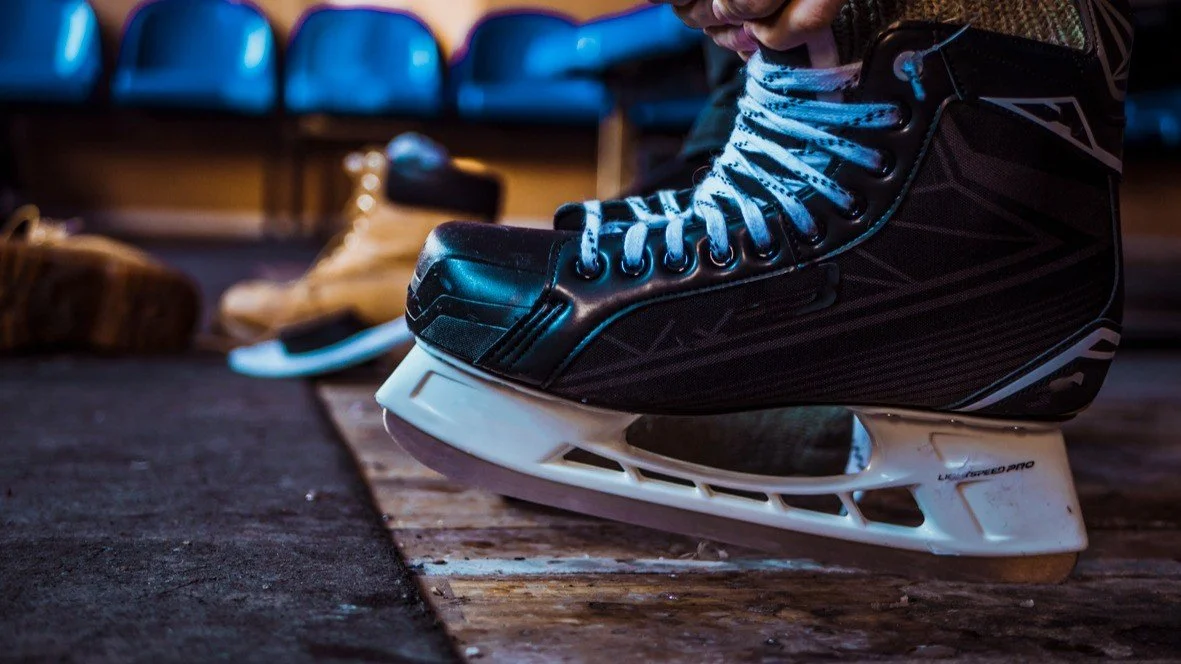Just Loosen Your Skates
Rigidity gives the illusion of safety — until it limits what’s possible.
True strength is the ability to stay grounded while everything around you shifts.
And sometimes, the simplest reminder of that truth comes in an unexpected form, like learning to loosen your skates.
As CEO and Co-Founder of an aerospace & defense technology company building next-generation hypersonic aircraft with unmatched speed and precision, my client's work and his life sit at the intersection of complexity and speed.
I’ve watched him navigate complexity at the relentless pace of leading a company that’s literally designing the fastest aircraft in the world, while also being a devoted husband and father.
For someone operating at that level, work-life balance can feel like a myth. So instead, my client focuses on work-life integration, learning to find micro-moments of presence amid the chaos.
One of those moments began with a pair of hockey skates.
Hockey had been part of his life for as long as he could remember; he loved the sport and played competitive hockey in high school.
After a recent ACL reconstruction, he was eager to return to the ice; between injuries, growing a family, and the all-consuming demands of running his company, he hadn’t skated in almost a decade.
Getting back on the ice wasn’t just physical rehabilitation. It was a reconnection to something essential, to an almost forgotten part of himself. It was its own form of therapy — a kind of meditation.
The next time he laced up, he tied his skates the way he always had: tight, controlled, pulled all the way to the top.
Without realizing it, he was protecting himself from injury by guarding his ankles, minimizing risk, and keeping everything perfectly secure.
But that protection came with a cost: it left no room for movement, or for the possibility of something new.
This time, though, he paused. As he tightened his laces, he caught himself wondering, “Maybe there’s a better way to do this.”
So he did what great leaders do: he got curious.
He researched how others laced their skates for optimal performance and began to experiment.
That’s when he discovered a subtle but profound change — tighter near the ankle crease, looser toward the top of the boot.
The next time he stepped onto the ice, he tried the new approach.
At first, it felt strange: less rigid, a little unstable. But as he moved, something shifted. His stride lengthened, his knees bent more deeply, his power returned.
And then it clicked.
With a looser boot, he found something completely new: a longer stride, a deeper squat, and the ability to harness more power and agility, all with less effort.
But loosening his skates also demanded new strength. His ankles had to adapt to develop the stability, endurance, and control required to make the most of that greater freedom.
He wasn’t just skating differently; he was moving with a new kind of freedom, claiming more breadth and depth in his patterns on the ice.
It was a reminder that loosening your skates doesn’t mean letting go of discipline. Instead, it can help you develop the strength to stay steady inside a new kind of liberation.
“Loosening his skates” increased his agility; he didn’t need rigidity to succeed.
That realization began to ripple far beyond the rink and into his professional leadership presence.
Over the following weeks, he found himself trying new ways to communicate more effectively, taking more risks, and intentionally speaking his mind for the good of his team.
Specifically, he noticed three clear ways the lesson positively impacted his leadership:
1️⃣ He said what he thought more readily, without overanalyzing, even when it led to conflict.
2️⃣ He held the bar for excellence publicly, both his own and his team’s, where it might otherwise have remained an internal process.
3️⃣ He questioned others more rigorously, replacing assumptions with curiosity and creating more impactful discussions.
Each shift was a new way of testing what he’d learned on the ice: that being safely secured and comfortable isn’t power — flexibility is.
True strength is the willingness to try something new without knowing exactly how it will work out.
He discovered that being present — even in the midst of uncertainty — doesn’t slow you down. It sharpens your edge.
The Reflection
Loosening your skates in this sense has little to do with hockey, really.
Rather, it's more about reclaiming your range and adaptability in all circumstances, developing the ability to stay both strong and soft, precise and fluid, steady and responsive.
That’s the essence of Extreme Presence™: leadership that breathes.
So maybe the question isn’t just where can you loosen your skates?
Perhaps it’s also where you can take more risk, create enough space to feel everything, see clearly, and move with more adaptability than tension?
Because presence doesn’t slow you down — it brings you fully into motion.
If this story resonated, it’s because presence isn’t a luxury for leaders — it’s a way of living, leading, and creating at your highest level.
My work with founders and leaders often runs deep, helping them redesign their leadership approach from within. If you’re exploring that path, send me a note. I’d love to hear what you’re building.
Meantime, discover a new way to think about optimal performance, one rooted in clarity, not pressure. You might enjoy this sample from my audiobook, LEAP, where you will learn more about how high achievers create sustainable success by leading from within.

